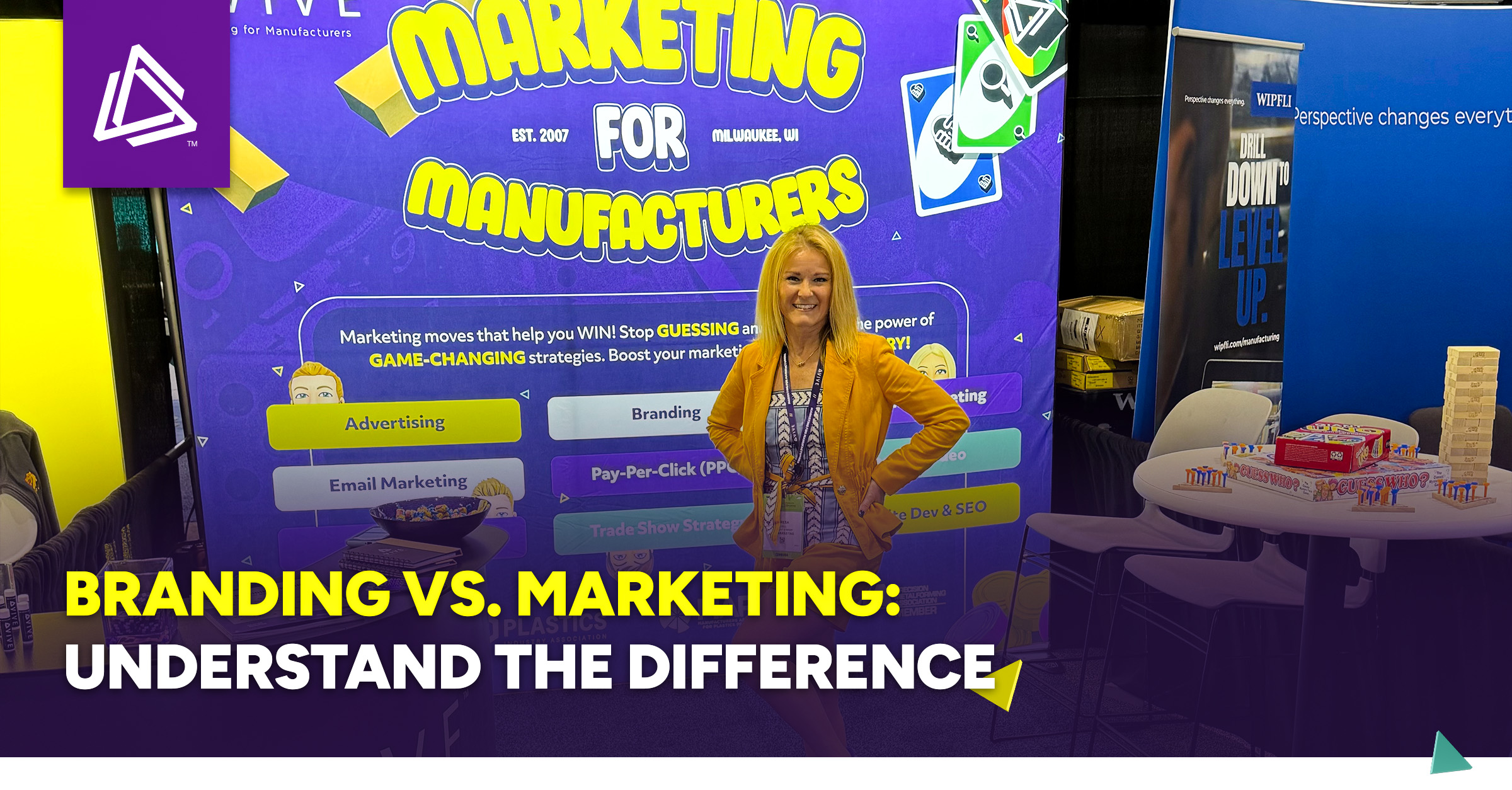In industrial sectors like plastics and metals, the terms “branding” and “marketing” often get lumped together. While they’re connected, they serve different purposes, and knowing the difference can help your business move more strategically.
Many B2B manufacturing companies turn to outside experts when they realize their marketing isn’t getting traction. Sometimes the problem isn’t with the tactics, but with the foundation. Without a clearly defined brand, marketing efforts lose focus. And without marketing, a strong brand may never reach the right audience.
Let’s break down the distinction between branding and marketing, discuss why both matter, and outline what manufacturers can do to align the two.
What Is Branding?
Branding is your identity. It’s the set of values, visuals, tone, and messaging that define how your company is perceived. It’s built internally and reflected externally.
For manufacturers in competitive categories like plastics or metal components, branding shapes how prospects interpret your capabilities, quality, and reliability. A consistent identity helps position your business as a dependable partner, not just another supplier.
Branding includes:
- Your logo, colors, and typography
- Mission, values, and messaging
- Brand voice and tone
- Visual consistency across platforms
- Perceived trust and reputation
A manufacturer marketing agency might refresh a logo or redesign a website, but without a brand strategy behind it, those efforts lack cohesion. Branding gives digital marketing for manufacturers something solid to stand on.
What Is Marketing?
Marketing is the execution of your message. It’s the process of promoting your brand, attracting customers, and generating qualified leads. If branding is the strategy, marketing is the movement.
Most digital marketing for manufacturing companies includes:
- Website development and optimization
- SEO for manufacturers, including search engine visibility and paid ads
- Email campaigns and lead nurturing
- Social media and content marketing for manufacturers
- Trade show materials and sales collateral
Strong marketing gets your message in front of the right audience (engineers, buyers, or OEMs) through the right channel. But when that message lacks clarity, marketing loses power. That’s where branding and marketing must connect.
How Does Branding & Marketing Differ from One Another?
Here’s a breakdown to help distinguish the two:

Both are necessary. Without a brand, marketing feels scattered; without marketing, branding remains unseen.
Why Do Manufacturers Need Both Branding and Marketing?
In the B2B marketing for manufacturing space, it’s common to focus on immediate needs, like more web traffic, more leads, or better trade show ROI. But success comes faster and lasts longer when marketing is tied to a clear brand identity.
When a manufacturer marketing agency builds a campaign, it should reflect your voice, not a generic template. A datasheet, LinkedIn post, and trade show banner should all reinforce the same positioning and tone. That’s what sets strong brands apart in crowded markets.
With both branding and marketing aligned, manufacturers can:
- Improve recognition among target buyers
- Create a consistent experience across every channel
- Build long-term loyalty and trust
- Communicate more effectively with engineers and procurement teams
- Stand out in comparison to less strategic competitors
Successful campaigns from B2B digital marketing agencies for manufacturers always begin with a branding discussion. Marketing execution becomes more efficient when the brand is already defined.
When are Branding and Marketing Misaligned?
Plastics processors and metal fabricators alike often run into friction when branding and marketing don’t work together. Visual inconsistency, unclear messaging, and shifting tones create confusion rather than confidence.
You might notice this if:
- Your website feels different than your print materials
- Sales teams are unsure how to describe your value
- Social media sounds off-brand or disjointed
- Technical buyers leave your site with more questions than answers
The disconnect often starts with mismatched priorities. A manufacturing digital marketing agency might optimize your SEO, but that alone can’t replace a brand strategy. On the other hand, investing in a brand refresh without activating it through content or paid media leaves value on the table.
Bringing both sides into alignment is where the real impact happens.
Building a Stronger Connection
Branding gives your marketing purpose; marketing brings your brand to life. Both are necessary for manufacturers looking to reach technical buyers, support long sales cycles, and create lasting impressions.
Start with clarity. Define who you are, what you offer, and why it matters. Then use marketing to communicate that message in ways that resonate with engineers, procurement teams, and decision-makers across every channel, from your website and email campaigns to trade shows and sales conversations.
When branding and marketing reinforce each other, your company becomes easier to recognize, easier to trust, and easier to choose.
Takeaways
Branding and marketing serve different functions, but manufacturers need both to compete in today’s landscape. Branding defines who you are. Marketing delivers that message to the people who need to hear it.
When the two are aligned, your business becomes easier to trust, easier to remember, and easier to work with.
Contact us to help bring clarity to your message. We partner with plastics and metals manufacturers to strengthen their brand foundations and connect with the right audience through strategic marketing.

